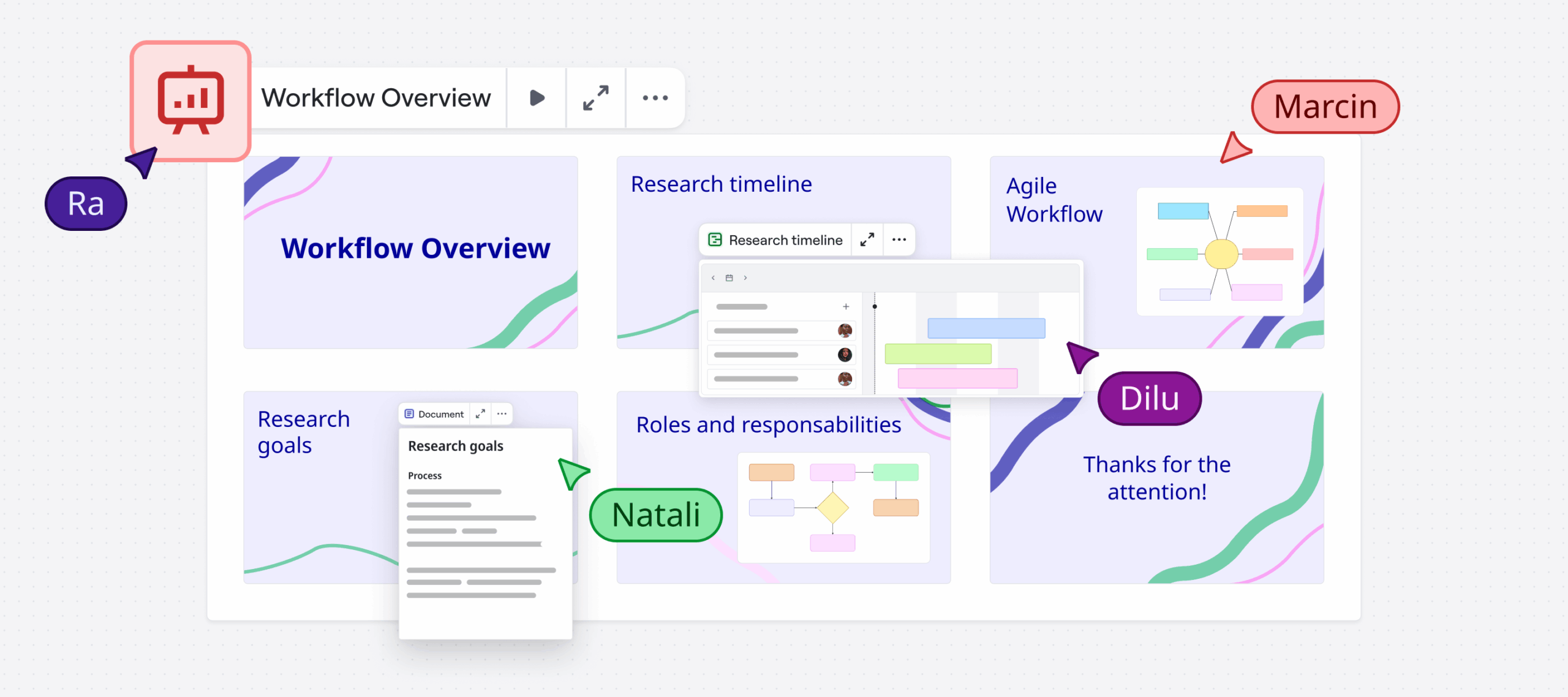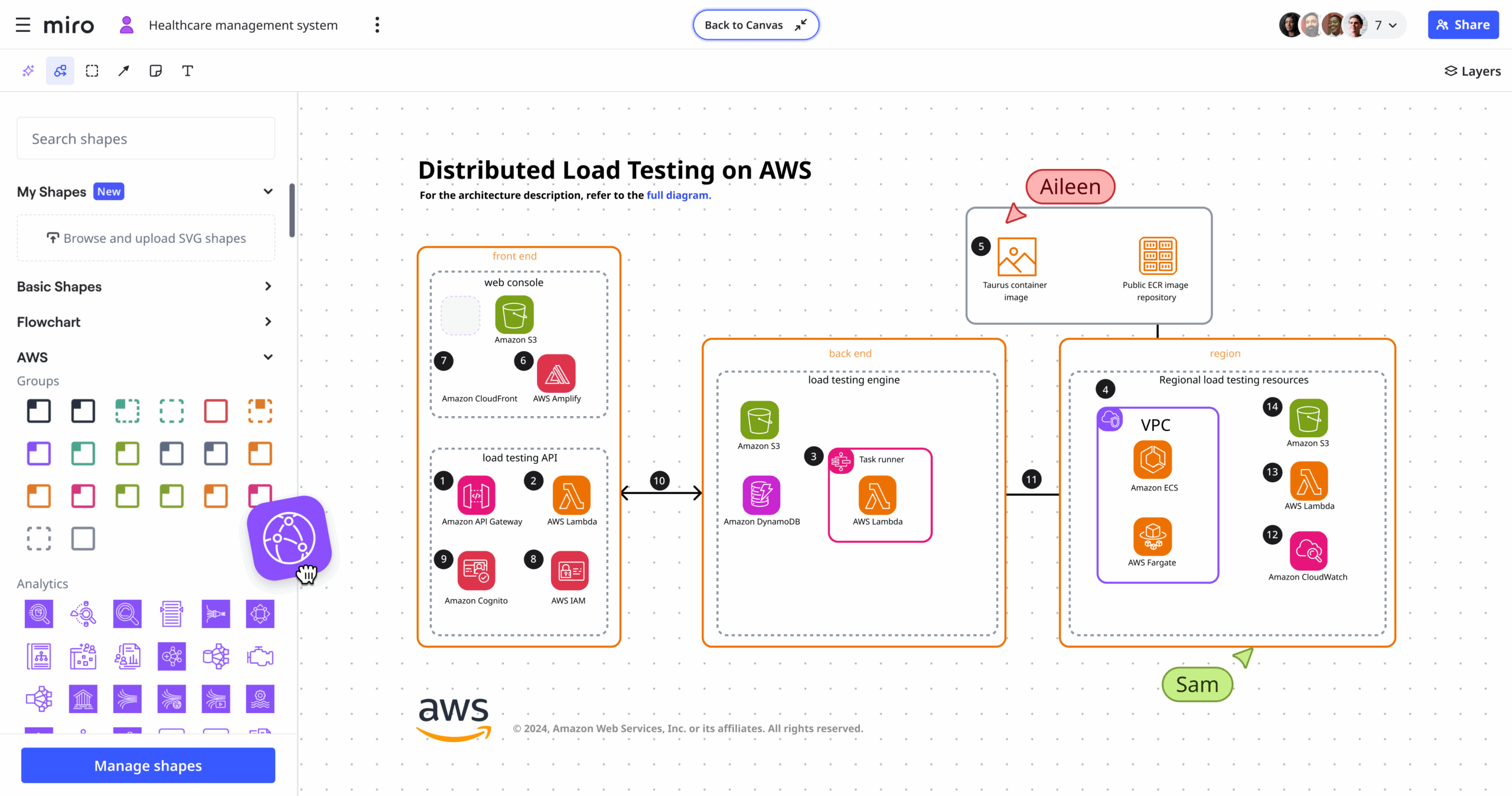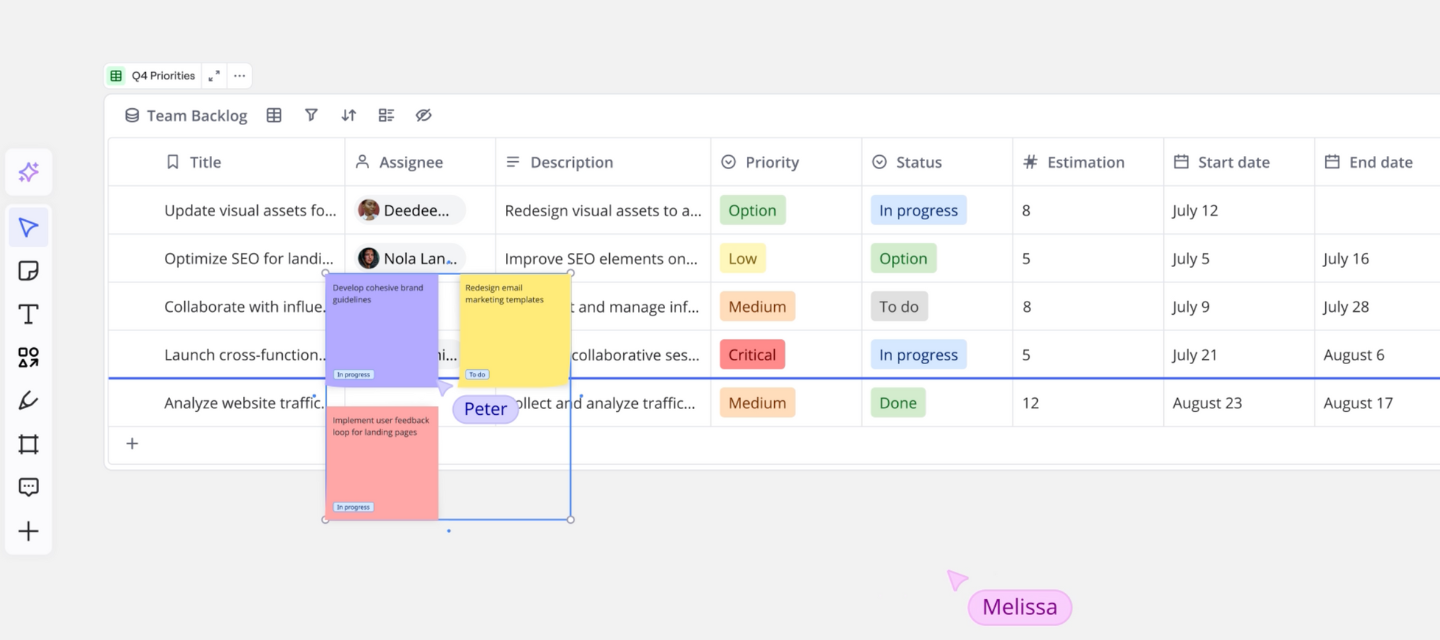We’re taking you behind the canvas to meet the people who actually make Miro. We’ve already taken a look at Tables & Timelines and Diagramming. Next up: Slides.
With Slides, you can transform any content on your canvas into an interactive presentation just by hitting a button. You can drop in formats like diagrams and tables, use engaging widgets like dot voting and sliders, or easily import from Google Slides or PowerPoint. It’s a great way to grab people’s attention and keep them glued to the screen
The ‘perfect tension’ behind product innovation
But Slides is also proof that when it comes to product upgrades, timing is everything. Pieter Overgoor is one of the Product Designers responsible for Slides. He jokes that his job is to “talk to people using Miro, understand what annoys them, and what they’d like to achieve but isn’t possible yet.” From the outset, Slides was designed to solve one of these critical issues.
“People are already doing their work in Miro so presenting is a very natural thing to do on top of that. But there wasn’t an easy way to do it,” he admits. Presenting means turning messy, complex content like brainstorms into a linear narrative. With no obvious way to do it, people were forced to go elsewhere. “We learned that more than 70% of people using Miro who want to present actually export their content into other tools because they’re better optimized for the job. We wanted to make the lives of those people easier so they don’t have to duplicate all their work and put it in some other tool and restyle it all over again.”
“People are already doing their work in Miro so presenting is a very natural thing to do on top of that… We wanted to make their lives easier.” – Pieter Overgoor, Product Designer
The very earliest version of Slides was actually an interactive presentation mode, which hid all the unnecessary buttons and made content more, well, presentable. It was a big improvement, but still didn’t quite make the process as simple as people wanted. There was no dedicated slide creation view, which meant the exact order of slides could be a little hit and miss.
Further iterations were planned, but the path to product perfection isn’t always straightforward. “We had a concept maybe one and a half years ago,” Pieter reveals, “but at that time there were many other competing priorities so we put it in the parking lot.” This, he says, is the “perfect tension” behind almost all product innovations. It’s the balance between creating something that people want and prioritizing company resources against the biggest strategic bets.
“The bigger the company grows the more work you have to do with your stakeholders to convince people that this is a good idea,” he continues. Eventually, the time was right. “We started to introduce formats like Docs and Tables & Timelines. Slides fitted very naturally into this vision of structuring things more. So we picked up the idea again and now we’re completely focused on making Slides a structured format on the canvas.”
Why bigger isn’t always better
Which is where Gui Barbosa enters the picture. As a software engineer, it’s Gui’s job to “translate Pieter’s design into code.” A lot of it is practical. It’s up to Gui to run the rule over the idea’s feasibility – how complex is it? How much time will it take? How many people will be needed? After that, it’s all about speed.
“The way we do it at Miro is to hack something that we’re not shipping. So it’s like, ‘Let’s play with this idea to see how complicated it is.’ Then we come up with a larger plan. What are the minimum requirements? What are the essential parts? When do we plan to release it?”
One of the most important aspects of any sprint is deciding the overall scope of the product. How big should Slides be? What should it aspire to do? Here, too, there’s a system of balances and trade-offs.
“We are on Miro every day, every meeting, we use it to create diagrams, to brainstorm engineering ideas, even for documentation. It makes things much easier.”
“We’re never really trying to replicate all the features of the competition, especially when it’s something that’s very specific like Google Slides,” explains Gui. “We always try to see where we are unique in the space. We’ll be lacking some features that Google Slides has but they don’t have the collaborative aspect that Miro has, or that your slides are living with your other content, or that you can just run a brainstorm with your team and in the same space take slides from that. The content is much closer to you.”
Pieter continues: “It’s always a bit of a bet. We try to make a vision backed up by data – what is the market? What do we think is realistic in terms of user numbers? We try to make the feature as great as possible then after a while we evaluate. If Slides becomes a huge success then we can continue to build on it and make it a bigger thing.”
Using Miro for faster collaboration
There were certainly challenges when it came to making Slides a ‘bigger thing’. As Gui explains: “Miro is an extremely agile company, which means we’re shipping things every day. What happens sometimes is that we’re working on Slides but there is another team changing something that overlaps with what we’re doing. Like, there is a change in the backend or the sidebar UI. It requires very good collaboration and communication with the other engineering teams.”
The good news? That’s where Miro excels. “We are on Miro every day, every meeting, we use it to create diagrams, to brainstorm engineering ideas, even for documentation. We use it extensively,” says Gui. “It’s nice that you can ship a new change where maybe there’s some risk involved and because we’re always the alpha testers of everything we do we can find bugs and gather feedback before it reaches customers. It makes things much easier.”
With Slides now firmly established as one of Miro’s most important formats, Pieter is able to reflect on the achievement. “Knowing that it’s being used by thousands of people is really cool,” he says. “But just so you know, there’s a lot more to come.” Watch this space.




